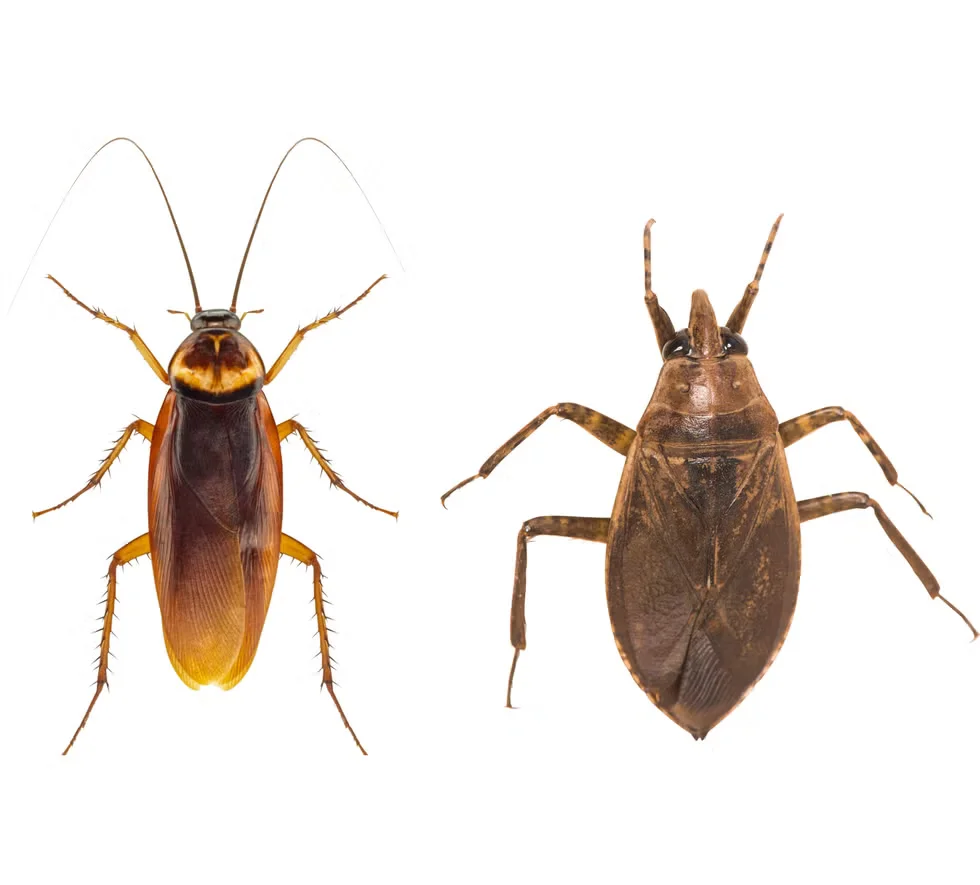Pest Control
Effective Ways to Get Rid of Water Bugs for Good
How to Get Rid of Water Bugs and Keep Them Away
No one wants water bugs invading their home. Whether they’re true aquatic insects or just cockroaches seeking moisture, they’re always unwanted. Fortunately, there are proven ways to get rid of water bugs and prevent future infestations.
These pests thrive in damp, dark environments. But with strategic prevention and treatment, you can take control quickly and effectively.
Understand the Enemy: Water Bugs vs. Roaches
Water bugs and cockroaches are often confused. True water bugs live in water, while roaches prefer damp indoor areas.

photo : left: American cockroach / right: Water bug – getty images
Both types can appear similar, with flat, dark bodies and long legs. However, water bugs rarely infest homes unless brought in accidentally.
Cockroaches, on the other hand, are more common inside homes and often called “water bugs” in humid regions.
Signs You Have a Water Bug Problem
Before taking action, confirm you’re dealing with water bugs. Look for these signs:
- Dark oval insects near drains or under appliances
- Droppings or egg casings in moist areas
- Foul smells from infested spaces
If you notice these, it’s time to act fast.
Effective DIY Solutions to Get Rid of Water Bugs
Baking Soda and Sugar Bait
Mix equal parts baking soda and sugar to create a deadly trap. Bugs eat it and die from internal gas buildup.
Place the mixture in shallow containers near sinks, drains, and behind appliances. Refresh every few days for best results.
Boric Acid Treatment
Dust boric acid around entry points and hiding spots. It sticks to bugs, dehydrating and killing them within hours.
Use a light dusting—too much can scare them off. Keep away from pets and children for safety.
Chemical Sprays and Gels
For stronger infestations, use store-bought sprays or gels. They kill on contact or through ingestion.
Apply gels in hard-to-reach areas and sprays around cracks and baseboards. Always follow label directions carefully.
Traps for Monitoring
Sticky traps catch bugs and help you track activity levels. Place them where bugs roam and check daily.
Replace used traps often and record where activity increases. This helps identify problem zones for future treatment.
When to Call a Pest Control Pro
DIY methods may not work for severe infestations. If bugs keep coming back, call a licensed pest control company.
Professionals identify the source, apply safe treatments, and block future infestations with precision.
Long-Term Prevention Tips
Eliminate Moisture
Water bugs love damp places. Fix leaking pipes, improve drainage, and use dehumidifiers in humid rooms.
Also, run exhaust fans in kitchens and bathrooms to reduce moisture buildup.
Seal Entry Points
Check for cracks around doors, windows, and foundations. Seal gaps with caulk or foam to block access.
Use weatherstripping and door sweeps for extra protection.
Store Food Securely
Keep all food in airtight containers, including pet food. Take out trash regularly and clean bins often.
Rinse recyclables before storing to eliminate odors that attract pests.
Clean Regularly
Vacuum often, especially under furniture and appliances. Wipe surfaces after meals and sweep crumbs daily.
Deep clean rugs and carpets every few months to remove hidden debris.
Use Natural Repellents
Try rosemary, bay leaves, or lavender sachets in drawers and corners. You can also spray diluted essential oils near entry points.
These scents may deter pests while keeping your home smelling fresh.
Final Thoughts on Water Bug Control
You can get rid of water bugs using simple tools and consistent cleaning. Identify entry points, remove food sources, and act quickly.
If DIY methods don’t solve the issue, don’t hesitate to call in professional help.
Want more guides to protect your home? Visit our website now and explore expert solutions to everyday household problems.